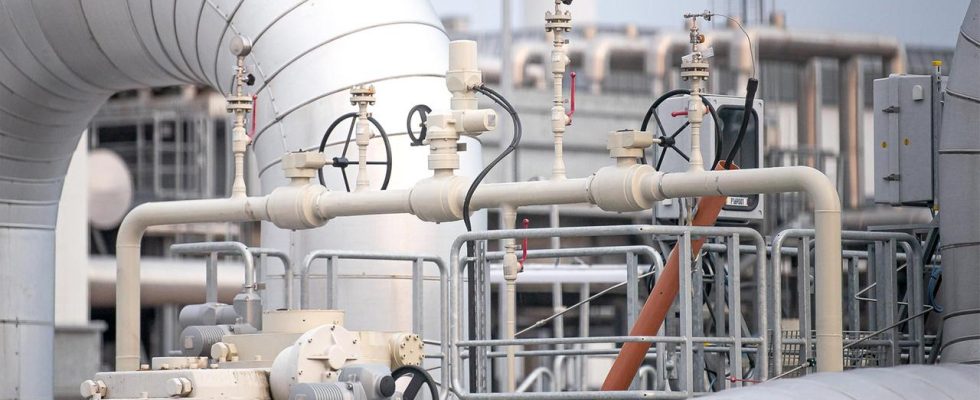Germany met its target for filling gas storage facilities more than a month in advance. The supply for the winter seems to be secured. Households have also recently used less energy.
The natural gas storage facilities in Germany have reached the 95 percent fill level ahead of schedule. This morning they were 95.05 percent full, according to preliminary data from the European gas storage association GIE. A regulation introduced last year during the gas crisis stipulates that the storage facilities should be 95 percent full by November 1st. This goal has now been achieved early.
This means that the gas storage facilities have been filled significantly faster this year than a year ago. On the morning of September 26, 2022, the fill level was still 91.4 percent. The 95 percent mark was only reached on October 13th last year.
The storage facility in Rehden is over 97 percent full
The storage target for September of 75 percent was also met in June this year. The storage systems compensate for fluctuations in gas consumption and thus form a kind of buffer system for the market. The last time the storage tanks were 100 percent full was on the morning of November 14, 2022.
In winter, the filling levels usually decrease due to higher consumption and then increase again after the end of the heating period. According to previous information from the federal government, the amount of natural gas stored in the storage facilities at 100 percent level corresponds to the consumption of two to three average cold winter months.
The largest German storage facility in Rehden, Lower Saxony, which was controlled by the Russian state-owned company Gazprom until the beginning of April 2022, recorded a fill level of 97.42 percent in the morning. The 95 percent mark was also exceeded across the EU. According to GIE, the level was 95.08 percent this morning.
Germany “when storing and when Diversify procurement better”
Because of the full gas storage facilities, among other things, the President of the Federal Network Agency, Klaus Müller, is confident about the gas supply in the coming winter. “We are already optimistic and we are better prepared than last year,” he recently told the “Editorial Network Germany”. This is because Germany is “better at storing and diversifying procurement.”
According to the Federal Network Agency, Germany received natural gas from Norway, Belgium and the Netherlands last Monday. There were also deliveries by ship via the new LNG terminals on the German coast. Smaller quantities came from Austria and Switzerland. Natural gas from Russia last came to Germany via the Nord Stream 1 Baltic Sea pipeline on August 30, 2022.
Households used five percent less heating energy in 2022
Another reason for the more favorable situation than in the previous year is “that the industry is constantly using significantly less gas,” said Müller. Private households also used their heating more consciously and saved considerable energy. This is also shown by the current “heat monitor” from the German Institute for Economic Research (DIW).
Adjusted for the outside temperature factor, they used five percent less heating energy in 2022 than in the previous year, and emissions of the greenhouse gas CO2 also fell accordingly, as the DIW announced today. Actual CO2 emissions fell by 15 percent due to the mild winter. Nevertheless, the climate targets were narrowly missed, it was said. The study is based on data from the real estate service provider Ista. The heating energy bills of 150,000 two-family and multi-family houses with around one million apartments nationwide were evaluated.
“Households were only able to mitigate the additional costs caused by sharply increased prices by heating less,” said study author Merve Kücük from the climate policy department at DIW Berlin. “Their expenses therefore did not increase as much as the prices in the residential buildings considered, namely only by 17 percent on average.”

